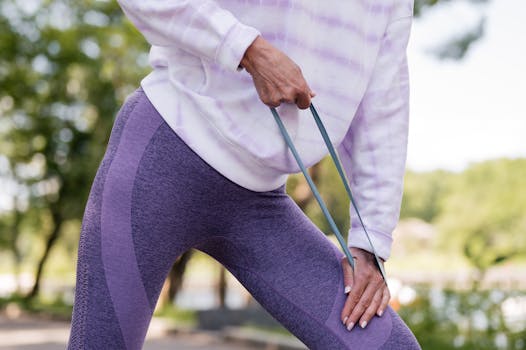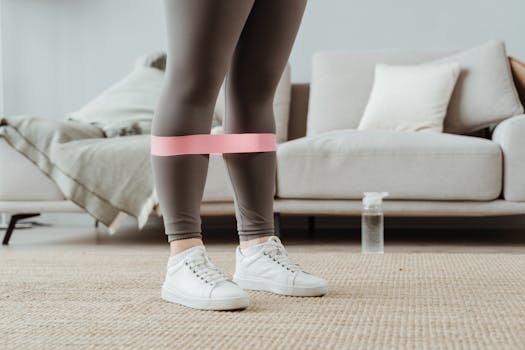Contact Us (720) 964-1335 or (901) 675-6125

When most people think about strength training, they picture barbells and bulky gym machines. But for women over 40, especially those navigating joint pain, hormone shifts, or weight loss medications like GLP-1s, there’s a more functional, joint-friendly way to build lean muscle: resistance bands.
If you’ve ever skipped strength training because it felt intimidating or too intense, it’s time to reconsider. Resistance bands offer a low-impact, high-reward option that you can do anywhere – at home, in a hotel, or between meetings. And yes, they still deliver results.
Why Strength Training Matters After 40
As we age, we naturally lose muscle mass, a process called sarcopenia, which slows metabolism and makes fat loss more difficult (Volpi et al., 2018). The right kind of resistance training helps:
- Preserve and build lean muscle
- Support bone density and joint health
- Improve insulin sensitivity
- Boost resting metabolic rate
For women using GLP-1 medications (like Ozempic® or Mounjaro®), muscle maintenance is even more important, since appetite suppression can lead to under-eating and muscle loss. Resistance training, even with bands, is a powerful counterbalance.
What Makes Resistance Bands So Effective?
Unlike free weights, resistance bands create constant tension on the muscle throughout the entire range of motion. This helps activate stabilizer muscles and improves functional strength – making everyday movements like squatting, reaching, and twisting easier and safer. Let’s not forget, they’re also:
- Portable and travel-friendly
- Beginner-safe with progressive levels of resistance
- Easy on joints while still providing a great burn
- Versatile enough for upper body, core, lower body, and mobility work
My Go-To: Perform Better Resistance Bands
I’ve used many brands over the years, but the ones I consistently reach for and recommend to clients are the resistance bands from Perform Better. They’re:
- Durable and long-lasting (no mid-workout snapping)
- Color-coded by resistance level for easy progression
- Comfortable to grip and wide enough for multiple uses
Ready to upgrade your strength routine without a gym membership? Click here to shop my favorite Perform Better bands and get started with my full-body beginner circuit.
Sample Full-Body Resistance Band Workout
Try this circuit 2–3x per week:
- Band Squats – 15 reps
- Banded Glute Bridges – 20 reps
- Banded Rows (seated or standing) – 15 reps
- Overhead Band Press – 12 reps
- Banded Dead Bug (core stability) – 10 reps each side
Repeat 2–3 rounds, resting 30–60 seconds between rounds.
Resistance Training + GLP-1 = Better Results
GLP-1s can help with appetite and blood sugar regulation, but they won’t help you build muscle —that part is up to you. Adding in resistance bands a few times a week can:
- Maintain your metabolism during weight loss
- Improve body composition (less fat, more muscle)
- Support mood, motivation, and energy
And no, you don’t have to lift heavy to see change. You just have to stay consistent.
Want the exact band set I use with my coaching clients? Click here to order Perform Better resistance bands and I’ll send you my downloadable band workout cheat sheet!
Final Thoughts
As a woman over 40, I’ve learned to honor my body and not punish it. Resistance bands have helped me stay strong, mobile, and pain-free. And I want the same for you. If you’re building a home gym, traveling often, or just want to start with something approachable, resistance bands are your secret weapon. You don’t need a personal trainer. You just need a plan, a band, and a little space.

References
Volpi, E., Nazemi, R., & Fujita, S. (2018). Muscle tissue changes with aging. Current Opinion in Clinical Nutrition & Metabolic Care, 7(4), 405–410. https://doi.org/10.1097/01.mco.0000134362.76653.b2
